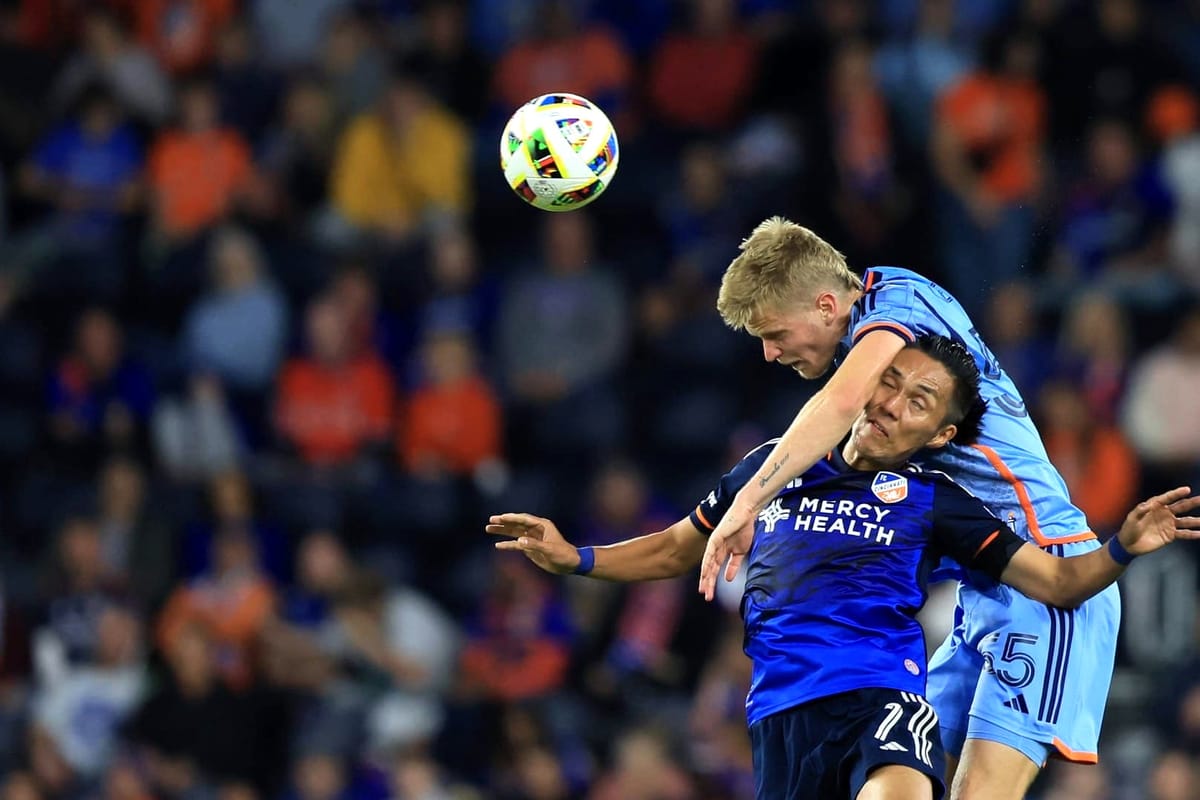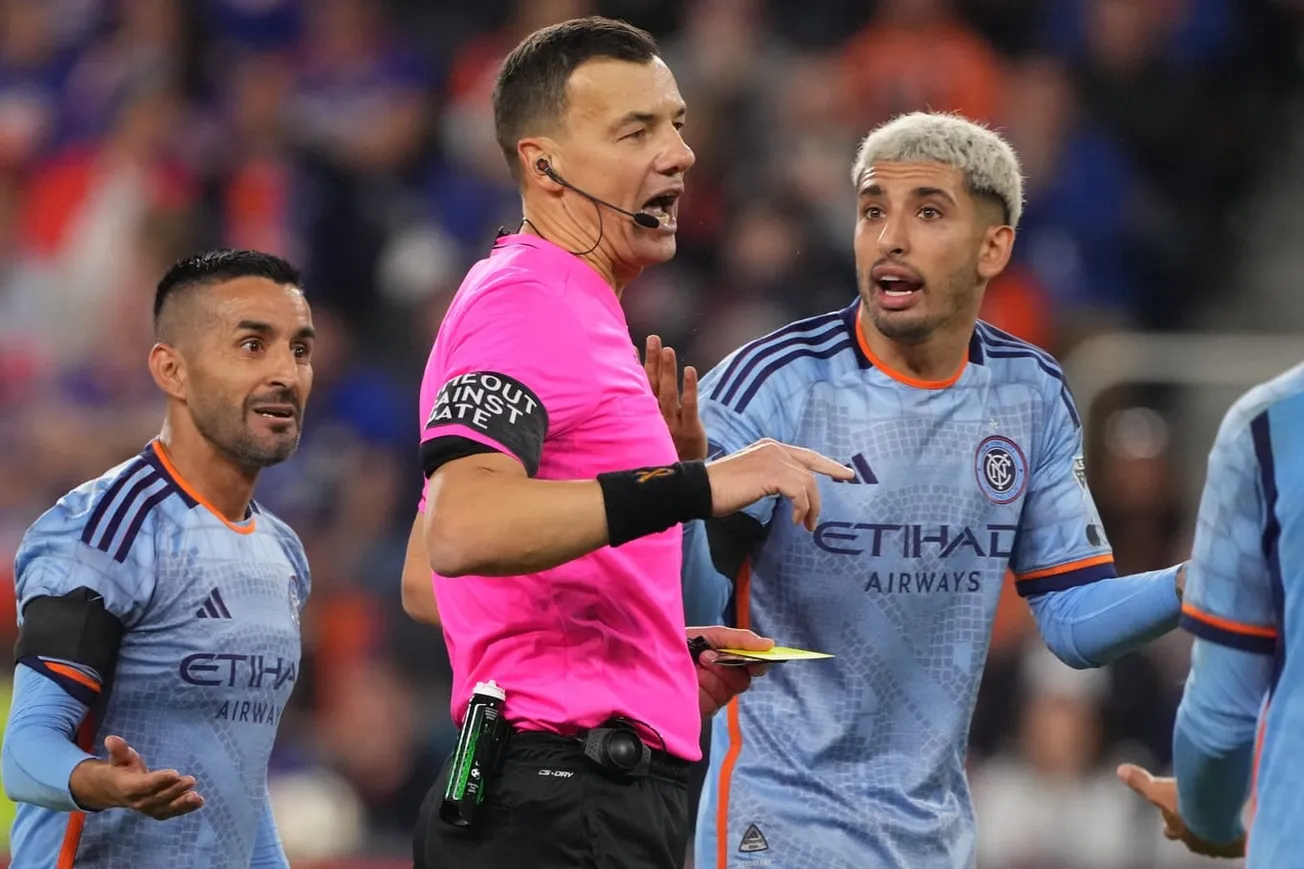For much of tonight's Round One matchup between FC Cincinnati and New York City FC in the 2024 MLS Cup Playoffs, referee Sergii Boiko looked like he favored NYCFC. The Ukrainian was tough but fair, whistling Cincinnati for their physical play and showing an early yellow card to Luca Orellano for dissent.
The home crowd wasn't having it. They booed every unfavorable call, even shouting their outrage at replays that clearly showed they were in the wrong. They were vocal. But they couldn't sway him.
Until maybe they did. During the COVID days, when soccer was played in empty stadiums, home field advantage all but disappeared: It turns out that it isn't that hard to travel, or play on unfamiliar grass, or eat hotel food, it was difficult to play in front of a hostile crowd. Some speculated that was because the collective shouts and boos and cheers swayed the officials. According to a paper published in Nature, "the crowd determines the outcome indirectly by biasing referees’ decisions (through changing their physiological and psychological states), which then influence the outcome of the game." It's the wisdom of the crowd, only the crowd always roots for one side.
Boiko called 20 fouls against Cincinnati, significantly more than the 11 he called against New York City. But one foul he didn't call was in the 51st minute, when Santiago Rodríguez was dispossessed in his own half by Obinna Nwobodo. Rodríguez was blindsided by Nwobodo, who came in with a hard tackle and a raised arm that made contact with the side of Santi's face.
Rodríguez staggered and turned to look at Boiko, who was positioned close by. It didn't look so different from the foul that earned Tayvon Gray a straight red card in the 99th minute of the game, but Boiko let play continue in the 51st minute. With Rodríguez and Keaton Parks moving forward in possession, Cincinnati now had a 4-v-4 in transition.
Acosta → Asad → Goooooooal 🚨🚨
— FC Cincinnati (@fccincinnati) October 29, 2024
CIN | 1 - 0 | NYC pic.twitter.com/xAsZxhfmEk
Even worse, New York City was caught out of position, with all four defensive players forming a small square at the top of the box. Gray was farthest forward, and challenged Yamil Asad for the ball. He was beaten, then stayed with Asad as he ran into the box. That left Luciano Acosta unmarked on the left flank. Yuya Kubo took a shot that was deflected to Acosta, who lifted a cross to Asad, who was now unmarked. Goal, Cincinnati.
A lot went wrong in the nine seconds it took for that sequence to unfold. There was New York City's compact defensive shape, for one. What started as a tight box become even more compressed as the play progressed, with no NYCFC players closing down the angles of a Cincinnati attack that fanned out once they recovered the ball.
There was the lack of situational awareness, for another. Asad was double-teamed, then left unmarked. Two players tried to close down Asad and failed, then two players tried to close down Kubo and failed. That left Orellano open on the right to move the ball wide for the first shot, and Acosta on the left to pick up the deflection and provide the assist for the second.
But it was the non-call that seemed to set this run of play in motion, when Parks and Rodríguez didn't track back and the four NYCFC players in defense paused for a half-beat as they waited for the whistle. They never caught up with a Cincinnati that had gained the momentum.
At least that's the view from the comfort of an apartment in New York City, where the game was projected onto the living room wall. Maybe it felt different on the field. When asked about the play in the postgame press conference, Keaton Parks called it a "sloppy goal" but didn't agree that officiating was to blame.
That could be. But this New York City squad have been caught sleeping at several key moments this season, when a lack of focus or poor communication allows the opposition to pull apart a defense that are as good as any in the league — until they aren't. Parks said "you always play the whistle," but that hasn't always been the case with this team.

Did the crowd help sway Boiko? Possibly. Nobody likes to be booed over and over and over again by tens of thousands of people. Although the science is inconclusive (if we're to be completely honest), it's fair to say that the fans in the stands can exert some influence the officiating.
See: Gray's red card, which he earned for making contact with Acosta's face. That happened moments after Acosta jumped into the air and elbowed Gray in the face. Gray earned the foul even though he was sent off: He played the whistle, and was shown red.
Gray's red card will be reviewed, and possibly overturned. The goal can't.










